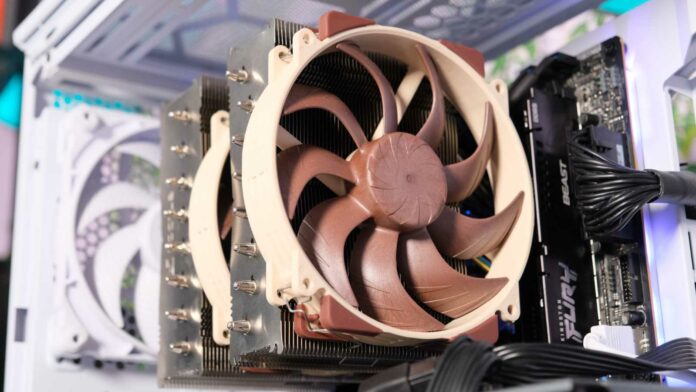If you’re a fan of beige and brown, you’ve waited a long time for Noctua NH-D15 G2, the company’s new flagship air cooler. Ten years in the making, it’s nipped and tucked just about every aspect of its most famous CPU chiller, but does the second generation really justify the $150 / £127.99 price tag?
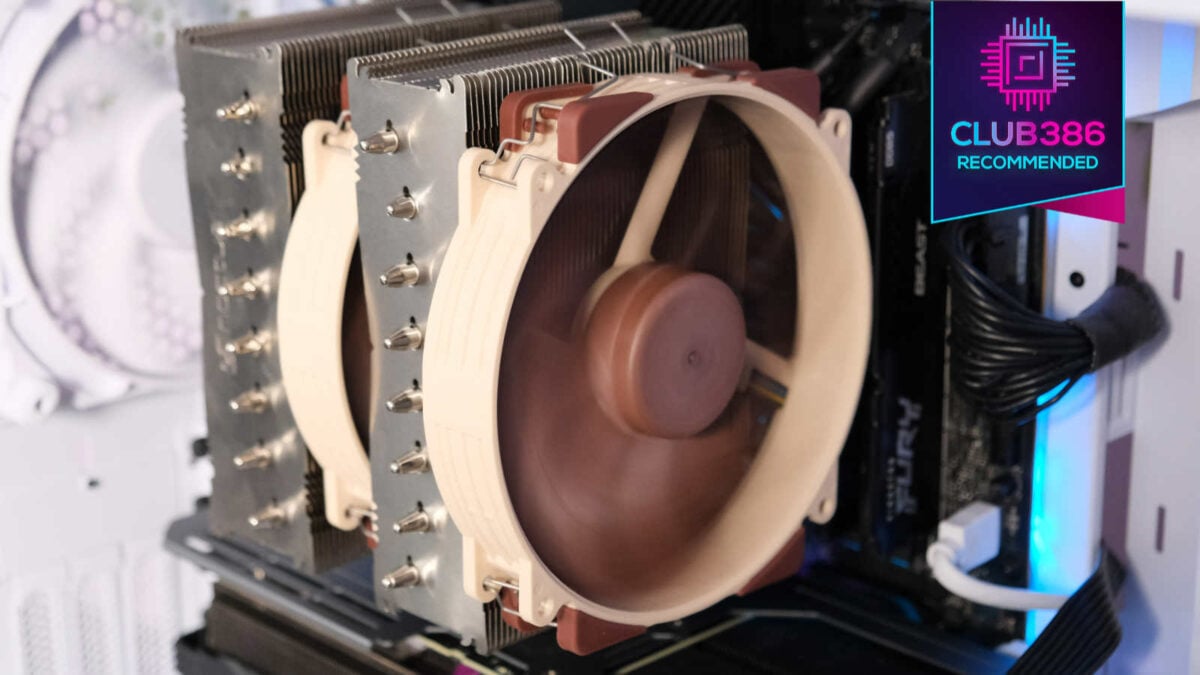
Noctua NH-D15 G2
£128 / $150
Pros
- Exceptional cooling
- Great CPU support
- Adjustable fan height
- Simple installation
- 6-year warranty
Cons
- Prohibitively expensive
- No chromax.black model yet
Club386 may earn an affiliate commission when you purchase products through links on our site.
How we test and review products.
Landing with a bang, NH-D15 G2 comes in three different flavours: standard, HBC (high-based convexity), and LBC (low-based convexity). The only difference between them is the curvature of the copper cold plate. It might sound complicated, but there’s a method to the madness.
HBC suits Intel CPUs best with a deeper curve to account for the socket clamp warping the chip. Alternatively, LBC is far flatter, which is ideal for AMD variants. If you’re not sure, the standard G2 is a comfortable middle-ground, acting as a catch-all, perfect if you’re not firmly entrenched in any particular camp.
They’re not labelled as brand-specific because Noctua doesn’t know if Team Red or Blue will change sockets, clamps, and plates over the next decade. And that’s exactly how long you can expect NH-D15 G2 to last, given the original shipped way back in 2014.
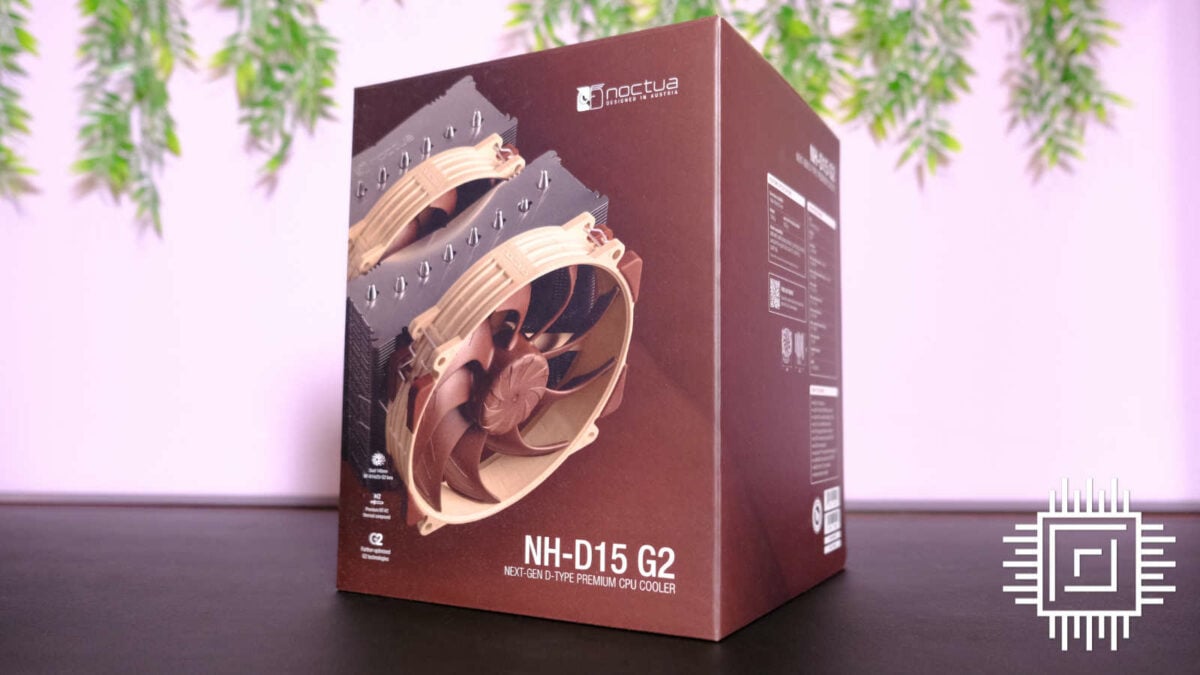
No matter which version you get, the rest remains the same. It’s a high-quality dual tower with eight heatpipes up from six on the first edition. It stands 145mm tall and is far denser than the original NH-D15, boasting an extra 23 fins. Much of this owes to the finer spacing between each blade, reducing from 1.9mm to a tiny 1.6mm. Similarly, Noctua has shaved the front stack down by 5mm to better balance the two fans.
It’s not a behemoth by any means, but you’ll need to be mindful of clearance. Fans can easily push this higher if you adjust them, and you might need to depending on the height of your RAM. You could always run this as a single-fan tower for particularly extreme, but that will change performance and the overall value.
The star of the show in my eyes are the two 140mm NF-A14x25r G2 fans. Running at up to 1,500RPM, they’re some of the slower spinning on the market but that’s by design. Sound-conscious, this affords a claimed 24.8dBA noise profile that I’ll soon put to the test. Not bad, considering each pushes 155.6m³/h of airflow.
Built from an expensive liquid crystal polymer, these fans are made to last with higher endurance than your standard plastic. It’s also what allows the nine blades to sit so close to the housing without friction, improving cooling.
Noctua rounds them out with a PPA and PPB system that makes one fan spin around 25RPM slower than the other. Blades that rotate at the same speed sometimes suffer from intermittent vibrations that create occasional humming, dubbed a beat frequency phenomenon. Small offsets in RPM remedy this without affecting cooling.
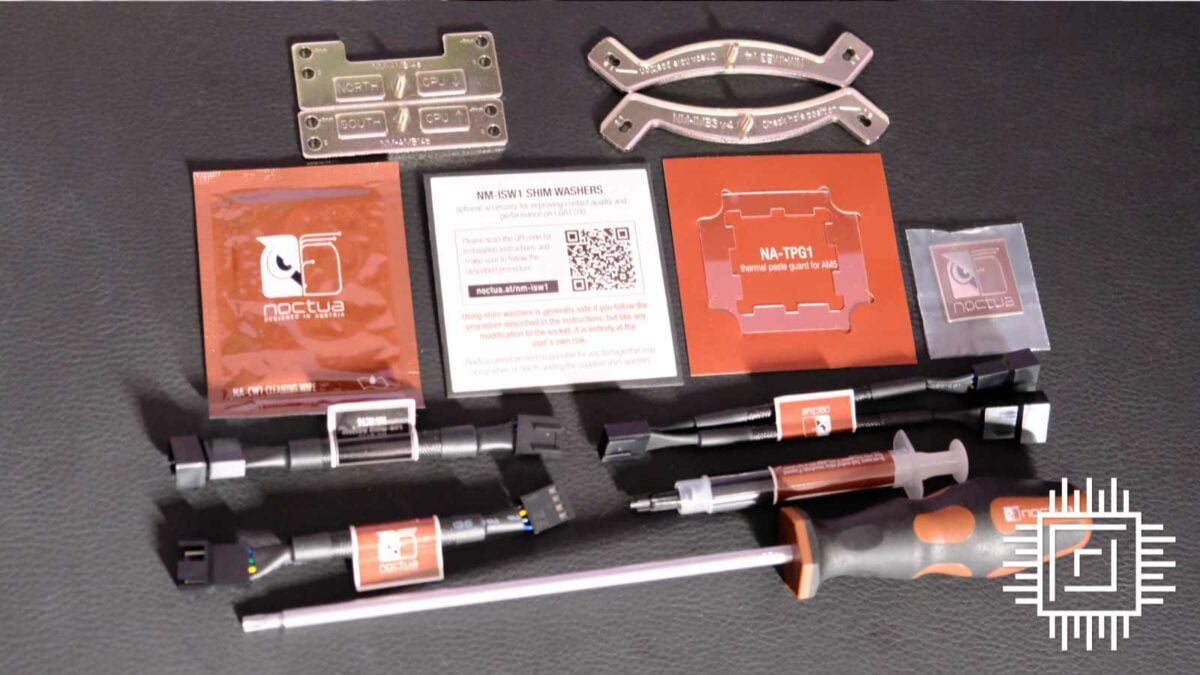
Installation
Right out of the box, Noctua impresses with a robust kit. Alongside a tube of its renowned NT-H2 thermal paste, there are enough screws for all modern Intel sockets from LGA1150 through to LGA1700 and 1851. It’s not surprising an air cooler forgoes Threadripper compatibility, but AM4 and AM5 are shoe-ins given AMD’s longevity.
Alongside online instructions, Noctua walks you through the step-by-step via a physical brochure. Everything is labelled as clear as day, so it’s virtually impossible to get anything wrong. South is the bottom, north is the top, and the sky is blue.
It feels like Noctua has thought about everything. There’s a cleaning kit to wipe excess paste from your existing CPU and an NA-TPG1 guard for AM5 processors to stop gunk from getting in the jigsaw-like chips. It won’t improve your thermals, but it will be a heck of a lot neater and prevent the conductive solutions from ruining your motherboard.
On the AMD side of things, the default mount is offset to improve contact with CCDs on AM5. However, today we’re sticking with our trusty Intel Core i9-13900K test bench. Setting it up was a doddle, but LGA1700 does have more nuance than other brackets.
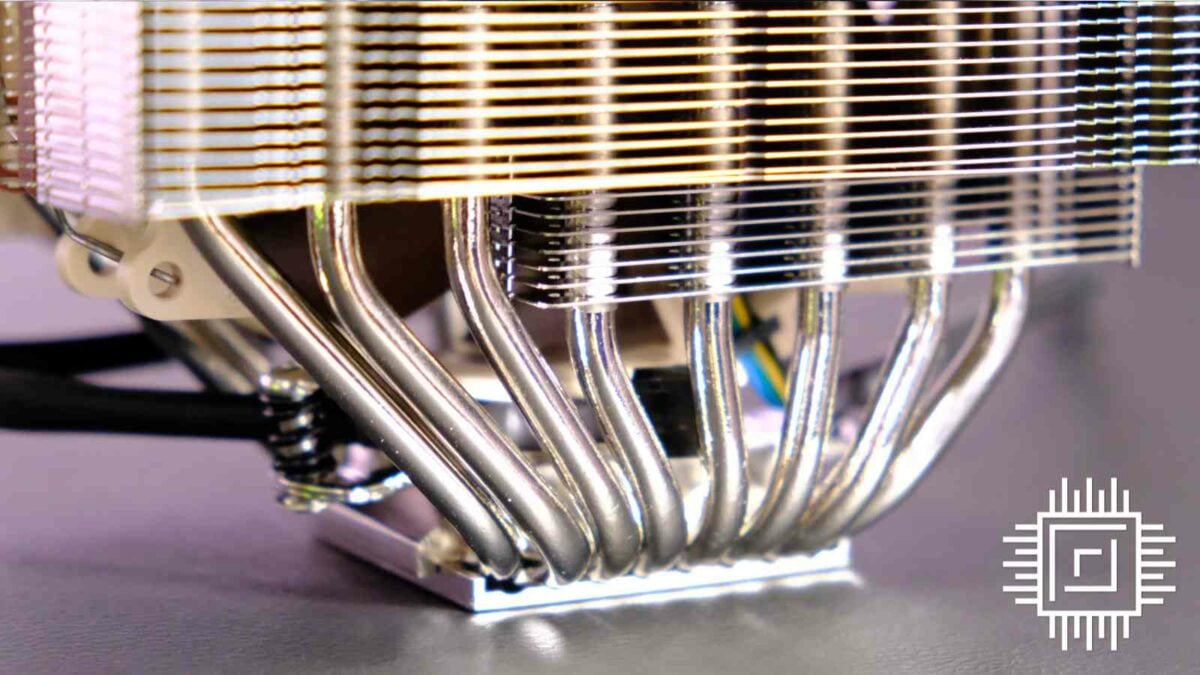
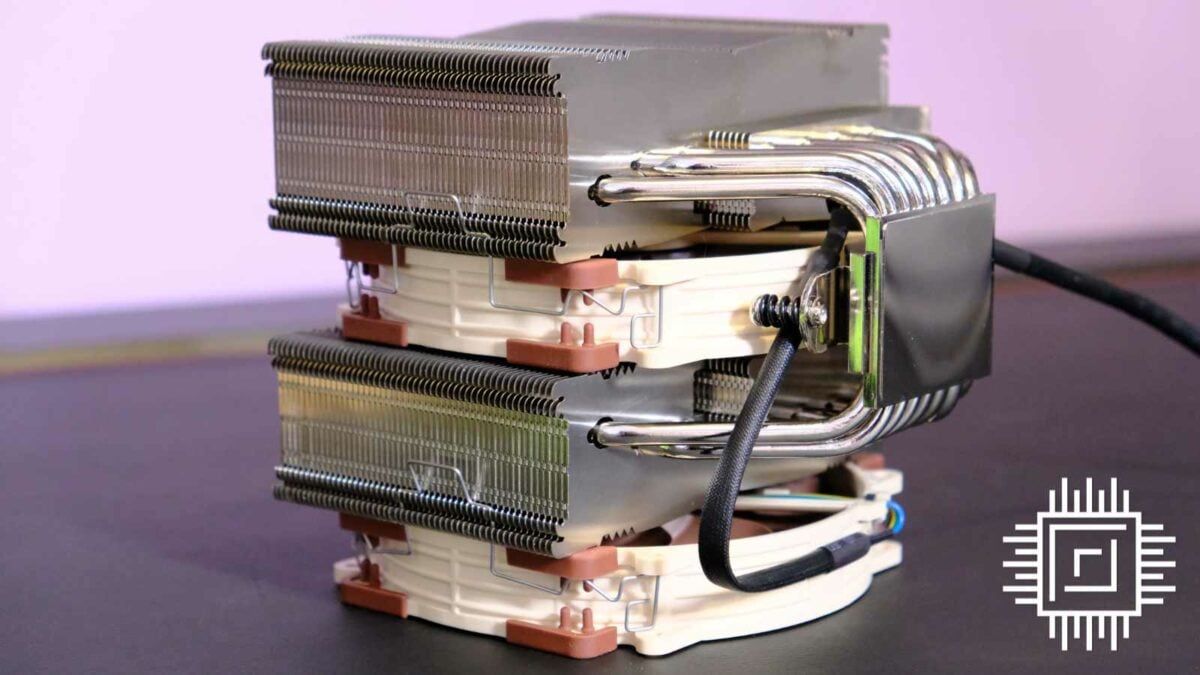
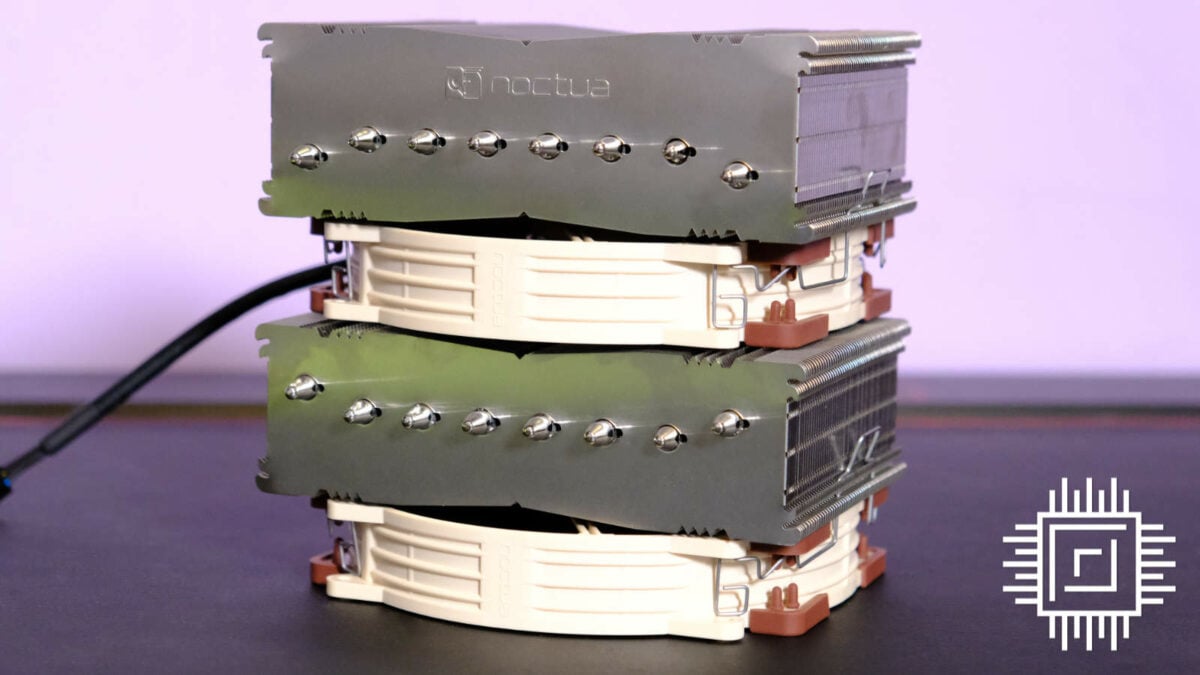
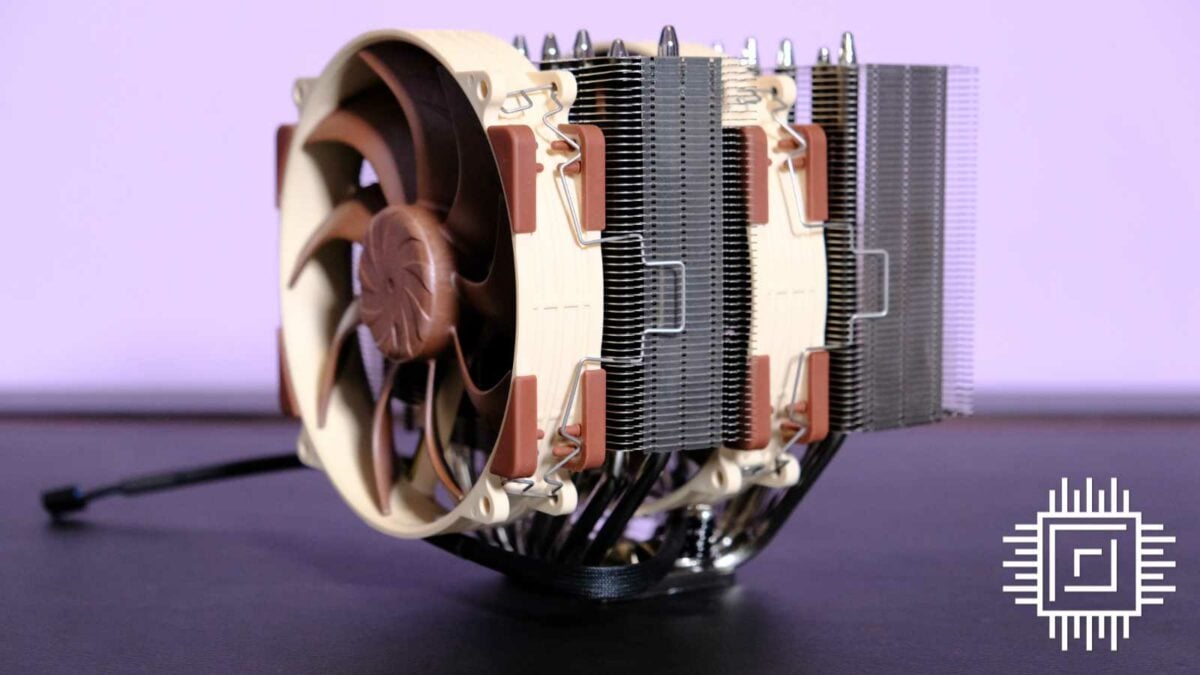
For starters, there are four washers meant to elevate the clamp and lessen the CPU deformation. This is an important first decision, but I wouldn’t recommend going through the hassle. The washers are so thick that getting the screws to thread is a faff, and I didn’t see any noticeable returns for my effort. It’s not cooler, quieter, or prettier than the normal route.
With that settled, you’ll need to assemble the backplate using the four long screws and C-clips that hold them in place. It’s not reversible, so pay attention to the writing on the bracket to see which way it’s supposed to face. The inner holes work for all Intel processors aside from LGA1700/1851, which use the outer holes labelled #2.
It’s a small point to labour on, but I’d expect a mechanism to hold the backplate in place while you assemble everything if you’re paying this much money. Sadly, you need to do the usual balancing act of holding it manually while fitting the mount.
For Intel CPUs, you have a choice between two configurations: horizontal and vertical. There aren’t many scenarios I envision where you’d need the latter, especially with a bulky graphics card in the way, but it’s nice to have the option. The default layout still has small issues with RAM clearance, but this is far easier to navigate with different fan heights.
Since both NF-A14x25r G2 clip into place using metal prongs, you can elevate them as high as you’d like. Don’t go too far, or you won’t cover enough of the fin stacks, but it’s handy for taller memory that demands a bit more room. While still wire, Noctua has updated these clips from the first generation, so they stick in place a lot more reliably.
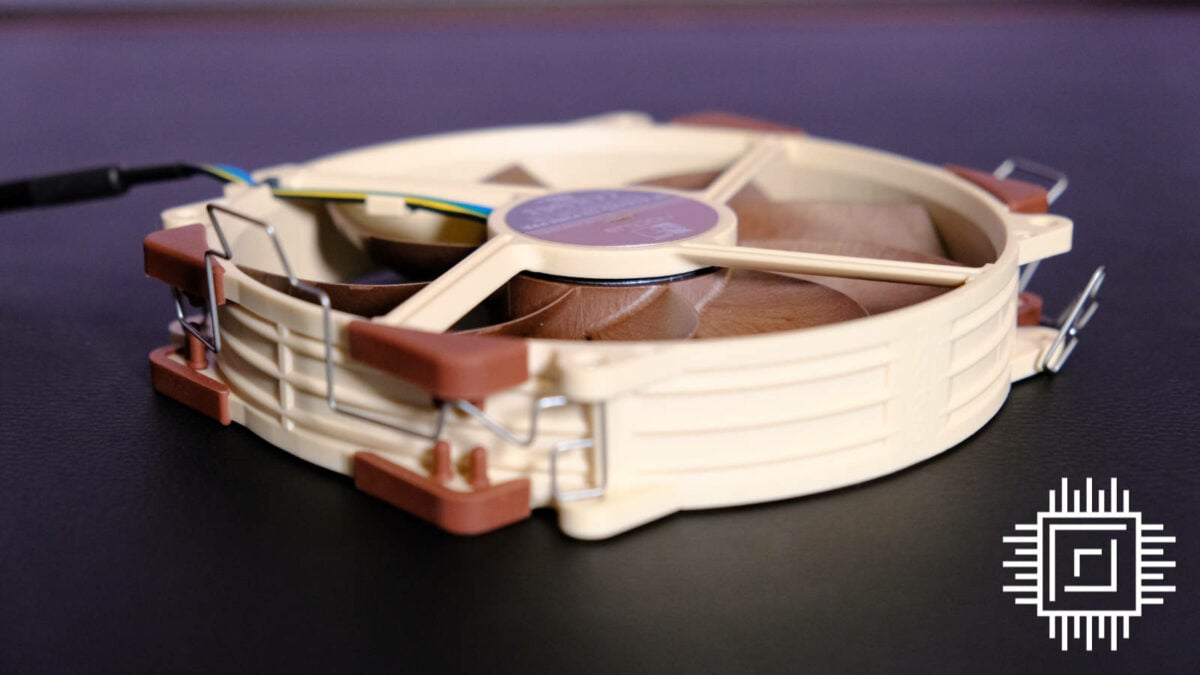
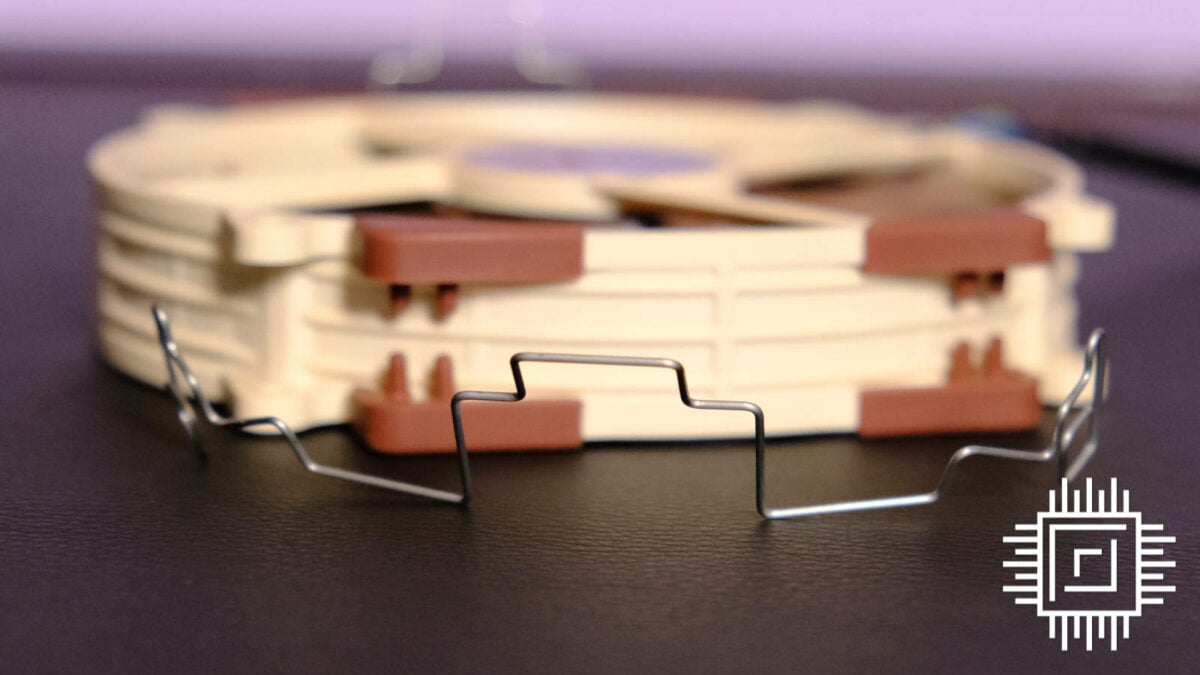
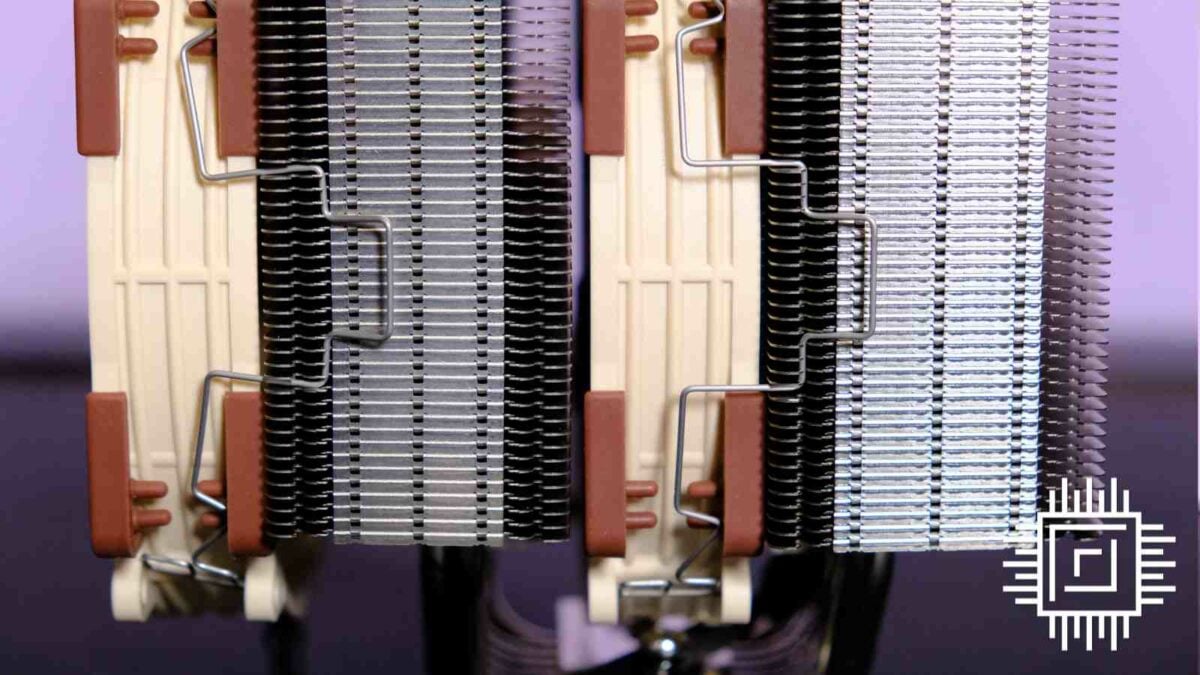
To make it a little easier, I recommend removing both fans to fix the tower. It’ll let you access the retention screws and return the fans to their ideal height once everything’s in place.
Much like Intel’s bracket, Noctua shies away from Philips in favour of Torx T20 screws. Don’t worry, as the company provides you with the right screwdriver in the box, and the added benefit is that it shouldn’t slip out half as often when you’re tightening or loosening.
When plugging in the fan headers, you have a choice. I recommend avoiding the two-in-one adaptor as it removes the PPA and PPB system but it’s there if you’re running short of fan headers. The default wire reaches the top-right CPU pins just fine, but it’s worth considering the NA-RC16 low-noise adaptors. On top of the extra length, these reduce the maximum speed from 1,500RPM to 1,250RPM, which comes in far handier than you’d think.
Once it’s all set up, you can sit back and marvel at your work. Unlike the original, you’ll notice NH-D15 G2 sits a lot higher in the standard horizontal config to give your graphics card more breathing room. There’s no need for a second S model.
Performance
Costing around double or even triple the price of an average air cooler, Noctua has an uphill battle to prove it’s worth the cost. There’s no room for error.
Putting it to the test, I plonked Noctua NH-D15 G2 on top of our Club386 Core i9-13900K platform with an ASRock Z690 Taichi motherboard and Gigabyte GeForce RTX 4070 Ti graphics card. To compare to others in the market, I ran Cinebench R23 and Cinebench 2024 to record noise, temperatures, and scores at 600, 1,200, and max RPM, which is 1,500.
Noise levels
| Type | Noise at 600RPM | Noise at 1200RPM | Noise at max RPM | |
|---|---|---|---|---|
| Noctua NH-D15 G2 | Air | 30.2 | 40.8 | 47.3 |
| Arctic Freezer 36 | Air | 38.5 | 39.4 | 41.1 |
| Corsair A115 | Air | 31.8 | 41.1 | 48.1 |
| be quiet! Dark Rock Elite | Air | 30.2 | 33.7 | 41.8 |
| be quiet! Pure Loop 2 280 | Liquid | 31.1 | 34.8 | 46.0 |
| MSI MAG CoreLiquid E360 | Liquid | 31.2 | 40.2 | 52.6 |
Noctua’s latest kicks it with the quietest when everything’s running slow, but crank speeds up, and it starts to hum a lot louder. Credit where it’s due, the company has balanced the pitch of the sound well, and there’s no rattle from the fan mounts.
Still, its 1,500RPM ceiling is certainly noticeable at 47.3dBA. Fortunately, you shouldn’t ever need to run NG-D15 G2 at full pelt, and what we appreciate about the Noctua fans is their ability to ramp up and down smoothly. The transition helps create effortless fan curves, and yes, Noctua does support 0dB mode, meaning the fans can be configured to switch off completely at low load.
Cinebench R23
| 253W 600RPM | 253W 1200RPM | 253W Max RPM | 153W 600RPM | 153W 1200RPM | 153W Max RPM | |
|---|---|---|---|---|---|---|
| Noctua NH-D15 G2 | 36,129 | 37,020 | 37,021 | 32,111 | 32,189 | 32,190 |
| Arctic Freezer 36 | 35,706 | 36,156 | 36,391 | 31,989 | 32,159 | 32,488 |
| Corsair A115 | 34,458 | 36,227 | 38,181 | 31,132 | 32,828 | 33,163 |
| be quiet! Dark Rock Elite | 36,544 | 36,614 | 36,668 | 31,899 | 32,126 | 32,127 |
| be quiet! Pure Loop 2 280 | 36,846 | 37,001 | 36,974 | 32,010 | 32,190 | 32,187 |
| MSI MAG CoreLiquid E360 | 36,730 | 36,830 | 37,294 | 32,085 | 32,285 | 32,266 |
For the extra noise, you get a chilling display of performance that rivals the best CPU coolers, be it air or AIO. Fortunately, it doesn’t matter much whether you go for 1,200RPM or 1,500RPM, giving you the option to silence 9dBA.
Purely from raw scores, Corsair A115 impressed us a little more in most categories, but it’s also a bit louder. Noctua NH-D15 G2 masters the middle-ground, showing us superb consistency.
Cinebench 2024
| Noctua NH-D15 G2 | |
|---|---|
| 253W 600RPM | 2,067 |
| 253W 1200RPM | 2,127 |
| 253W Max RPM | 2,129 |
| 153W 600RPM | 1,857 |
| 153W 1200RPM | 1,865 |
| 153W Max RPM | 1,889 |
Cinebench 2024 is a new test in our roster, leaving fewer points of comparison. However, it does drive home the sheer consistency of the cooler. In what seems like deja vu, there are just a few points of difference between 1,200RPM and Max RPM at both power draws.
Temperatures
| 253W 600RPM | 253W 1200RPM | 253W Max RPM | 153W 600RPM | 153W 1200RPM | 153W Max RPM | |
|---|---|---|---|---|---|---|
| Noctua NH-D15 G2 | 95.3 | 88.9 | 87.0 | 74.3 | 65.5 | 63.9 |
| Arctic Freezer 36 | 93.1 | 91.0 | 88.6 | 80.2 | 76.3 | 73.1 |
| Corsair A115 | 98.9 | 95.1 | 89.8 | 82.4 | 71.5 | 69.2 |
| be quiet! Dark Rock Elite | 94.4 | 93.0 | 91.8 | 77.6 | 70.8 | 67.7 |
| be quiet! Pure Loop 2 280 | 91.8 | 89.3 | 85.5 | 76.7 | 65.9 | 61.8 |
| MSI MAG CoreLiquid E360 | 87.2 | 86.0 | 82.0 | 71.9 | 62.2 | 59.7 |
Temperatures are where Noctua NH-D15 G2 shines. I couldn’t quite believe my eyes as the air cooler undercuts all its peers, including an AIO. The second generation proves it can tame an Intel Core i9-13900K, with particularly outstanding performance at the lower wattage. If I were to run this chip as my day-to-day, 65.5°C at 153W, 1,200RPM is far and away fantastic.
Nevertheless, air cooling still has its limitations at high draws. During our 253W, 600RPM tests, it can’t keep the chip running at full power. As it gets too hot, the wattage automatically drops to ~243W to compensate. Of course, I’d never recommend chancing the lower speeds on any cooler unless you want to risk thermal throttling, anyway.
Conclusion
Quite frankly, nobody builds CPU coolers quite like Noctua. The company could’ve done something iterative and called it a day, but that wouldn’t satisfy those who waited with bated breath for a true NH-D15 successor. Instead, NH-D15 G2 is a from-the-ground-up rebuild that leaps over the competition with unrivalled cooling in the air segment.
However, value is another question entirely. At $150 / £127.99, this is the single most expensive air cooler we’ve tested, pushing past most AIOs. The performance is there to warrant it, but will make you wonder where else you could flash that extra cash.
It an average of 8% extra performance over its peers, yet the cost differentials are staggering. Corsair A115 and be quiet! Dark Rock Elite are the closest air competitors that cost 28% less. Meanwhile, Arctic Freezer 36 has the widest gap, saving you a whopping 84%. Putting this into perspective, £100 can easily be the difference between silicon.
I can recommend Noctua NH-D15 G2 to anyone who won’t settle for second best, you just need wiggle room in the budget. After all, it’s backed by a six-year warranty that gives you a safety net and the promise of support for Intel and AMD CPUs that haven’t even been invented yet. Combined with exceptional build quality and a mostly intuitive installation process, it’s the last cooler you’ll ever need – at least until G3 arrives a long, long way down the road.
Verdict: a generational leap in air cooling performance for those with the deepest of pockets.

